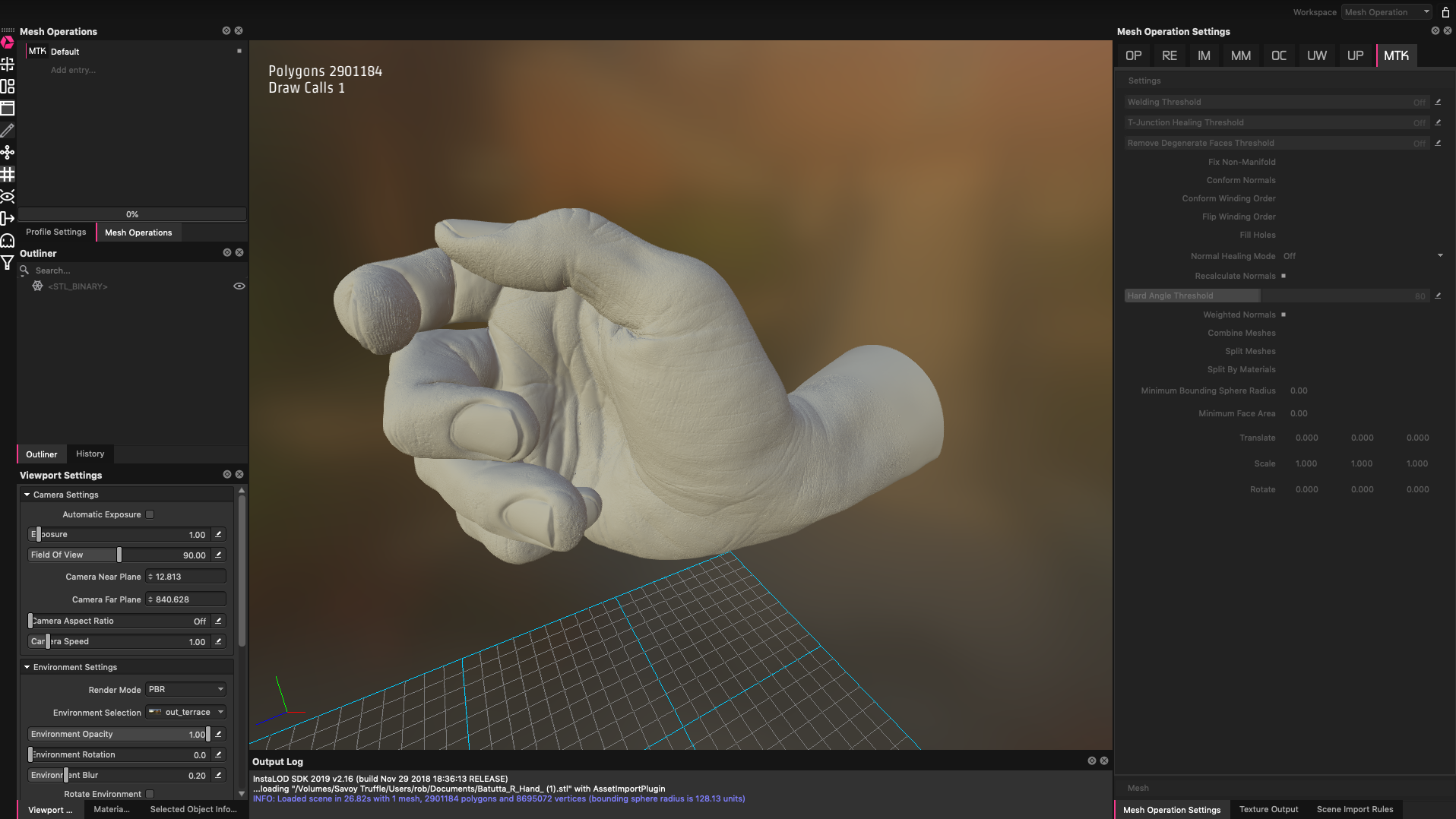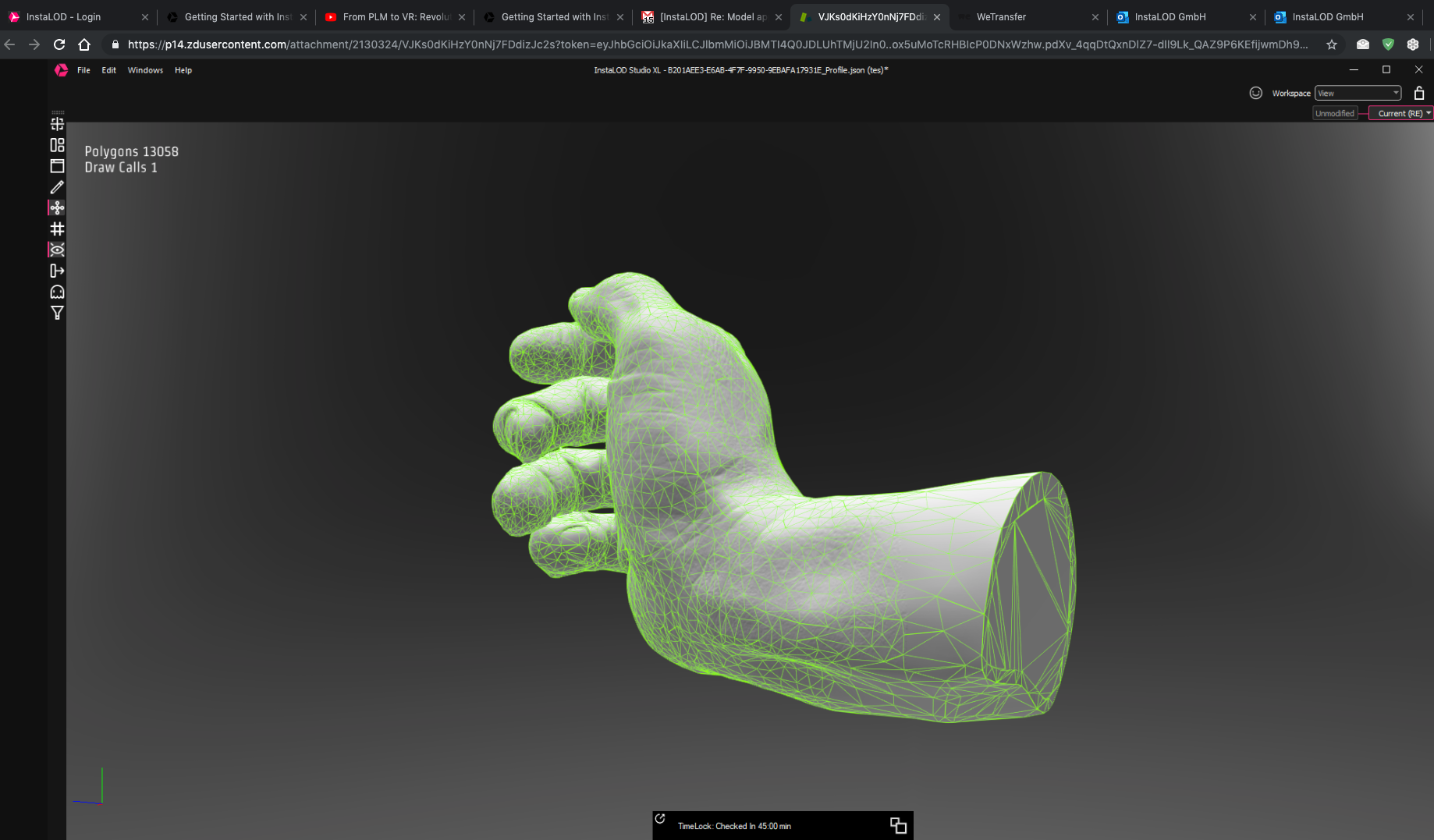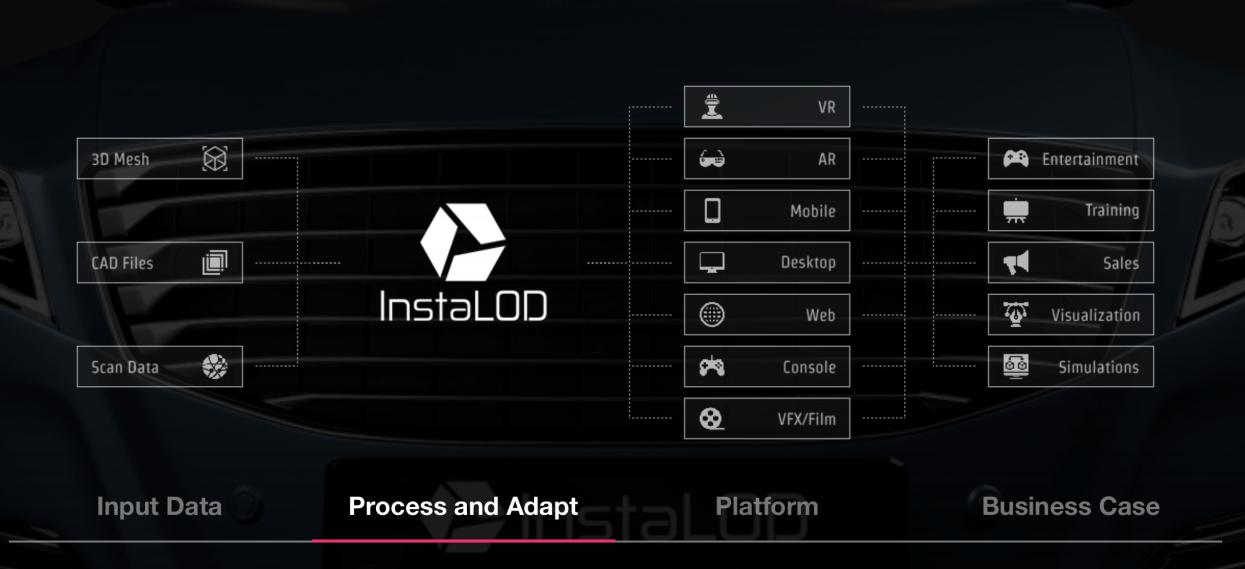Polygon Optimisation with InstaLOD

Using our unique software solution, large numbers ( or libraries) of high quality 3D textured models can be reduced and resolved into quality models by automated algorithms into staged levels of details (LOD) that allow huge reduction in the size of these imported CAD models, 3D Scanned models or Point Cloud data.
This is an example of an Unprocessed - 3D Scan of a large Hand (imported as an.stl model):
3D Scanners produce huge models with large numbers of polygons
( here nearly 3 million polygons ) 2,901,184 polygons

Versus the Processed in InstaLOD result ( now about 230x smaller ) just 13,058 polygons and still retains a high level of detail.

The powerful IntsLOD XL Studio program for MacOSX & Windows can pipeline process and fix all 3D models for use in a myriad of applications from AAA games, VR, AR, Mobile use, 3D Printing and simulation at model sizes down to 10% of the original size.
CAD import files have live access to the original source spline models.

Automated for Enterprise based 3D model optimisation,remeshing,CAD Tessellation and baked textures and UV control
g full the preservation of meta data and custom attributes.
※ This product is not sold to individual users. However we are eager to discuss how with InstaLOD's award-winning technology users can easily achieve cost savings of over 10X when creating new 3D assets or preparing data for any business case.
Contact:
Australia & New Zealand
Tel: (+61) 0416 240 305 (Rob Keeping)
e: st.au@InstaLOD.io
The Painkiller for 3D
1. Automatically optimize a dense 3D model while reserving appearance and
attributes until target amount of polygons has been reached (optimizing)
2. Automatically rebuild complex or dense 3D data from scratch (remeshing) while
targeting a light-weight model.
3. Automatically removed occluded polygons from the scene or the interior parts
of big assemblies (occlusion culling).
4. Automatically unwrap or unfold the 3D data and repacking the 2D layout
(parameterization).
5. Automatically perform draw call reduction by merging materials and colors.
6. Many more automatic operations and algorithms are available to perform
tasks such as repairing geometry or filling holes.
7. Automatically create high-quality polygon meshes from CAD data (tessellation)
with read capabilities for native CAD formats such as;
CATIA, PTC and
Solidworks as well as generic CAD formats such as STEP including full the
preservation of meta data and custom attributes.
|